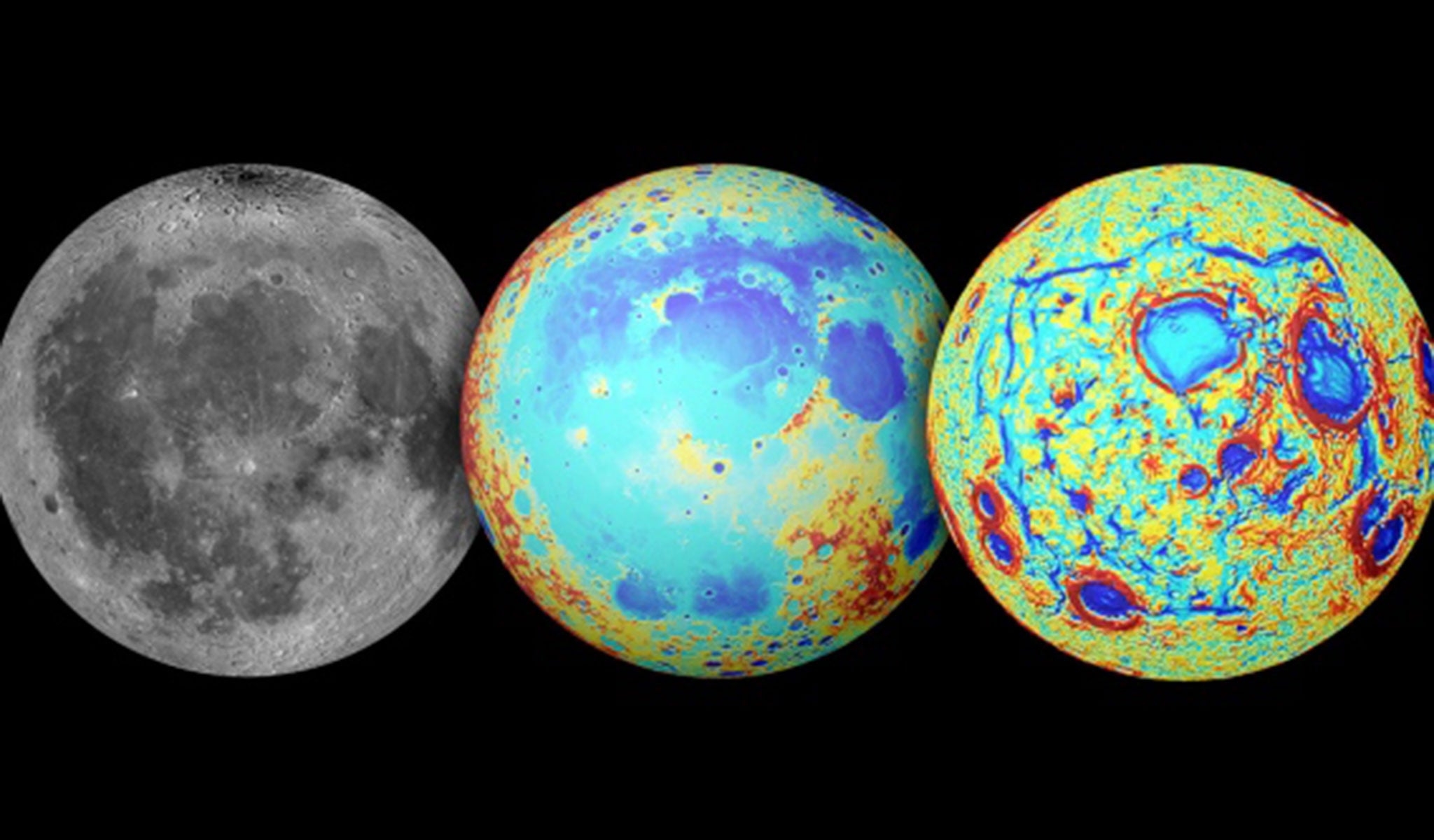Man in the moon mystery 'solved' by scientists
Scientists believe moon was created by bubbling magma - not asteroid crash

The famous ‘man in the moon’ image across the moon’s surface may have been created by bubbling magma – not an asteroid crash, as previously thought.
The mystery behind the 1,800-mile-wide section of the moon's Procellarum basin has been a long-running puzzle among scientists who believed it may have been caused after a massive asteroid crash.
But research published in the journal Nature suggests a large plume of magma deep inside the moon coming up towards the surface may actually be responsible for the features that have inspired the idea of a man in the moon.
A research team from MIT, the Colorado School of Mines and other institutions used data obtained from Nasa's Grail (Gravity Recovery and Interior Laboratory) mission to create a high-resolution map of the Procellarum.
They found that its border is not circular, but polygonal and made up of sharp angles that could not have been produced by a massive asteroid.
Instead, they believe the angular outline was produced by giant tension cracks in the moon's crust as it cooled around an upwelling plume of hot material from the deep interior.
In pictures: Blood moon eclipse
Show all 15As cracks appeared, they formed a "plumbing system" in the moon's crust through which magma could meander to the surface, said Maria Zuber, MIT's vice president for research.
Magma eventually filled the region's smaller basins, creating what we see today as dark spots on the near side of the moon.
The map was created using twin probes that orbited the moon from January to December 2012 and was used to determine where the lunar crust thickens and thins.
They found that the rim of the Procellarum region is composed of edges made up of 120-degree angles. An asteroid strike would create circular or elliptical craters and not these angular shapes, the team suggests.
However, even with this latest theory, the mystery of the moon has not yet been resolved, Ms Zuber said.
"How such a plume arose remains a mystery. It could be due to radioactive decay of heat-producing elements in the deep interior. Or, conceivably, a very early large impact triggered the plume.
“But in the latter case, all evidence for such an impact has been completely erased. People who thought that all this volcanism was related to a gigantic impact need to go back and think some more about that."
Additional reporting by PA
Subscribe to Independent Premium to bookmark this article
Want to bookmark your favourite articles and stories to read or reference later? Start your Independent Premium subscription today.

Join our commenting forum
Join thought-provoking conversations, follow other Independent readers and see their replies